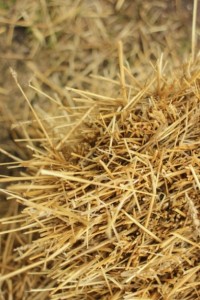More and more products are using plant based materials to appeal to a growing eco-conscious consumer base. There are now alternatives for a surprising number of things, from butter to cleaning sprays. There are also a growing number of options for building. If you want to take a plant based approach to creating your own property, it is a good idea to talk to us and get input from top architects in London.
What we want to do here is look at three new interesting materials you can try. They could be far greener than traditional options, offering benefits such as carbon reduction. They could also reduce the need for extractive processes, massively helping the environment.
Straw wall panels
 People have been using straw as an eco-friendly building material for a long time. Bales can be a load bearing material. Alternatively, you can use loose straw as infill for insulation. A newer application is panels. They have a timber frame with an infill. Impressively, producers can create them without using glues or chemicals.
People have been using straw as an eco-friendly building material for a long time. Bales can be a load bearing material. Alternatively, you can use loose straw as infill for insulation. A newer application is panels. They have a timber frame with an infill. Impressively, producers can create them without using glues or chemicals.
One of the most impressive things here is straw is highly sustainable. It is easy to produce more. Plus, while it is a common product for animal feed and bedding, it is still technically waste left over from the cultivation of crops like wheat. So, using it as a building material is even better for the environment.
Straw wall panels are impressively versatile. They can be various shapes to suit all kinds of design needs. You could choose them for simple single storey structures or multi-level buildings. You can discuss using them with top architects in London.
Bio concrete
A huge amount of work is going in to making the use of concrete more sustainable. While it is a really great building material, it does put a lot of pressure on the environment because of the extraction of materials like sand. It also causes problems like heat islands.
The idea of a plant based concrete will be surprising to many. What we actually have here is a highly porous material that is 90-95% recycled material. It has a moss covering, using a coating of spores, nutrients and water to make it grow much faster. The moss addresses the issue of the heat island effect. It can also absorb greenhouse gases and improve biodiversity.
The bio concrete could be a great option for cladding. It would be far more sustainable and eco-friendly than standard concrete. The fact it uses recycled materials would reduce the consumption of resources too.
Perennial grass panels
Finally, we have an interesting alternative to engineered wood like OSB or particle board. Instead, the idea here is to cultivate fast growing grass and use that to create panels. It saves trees and cultivating so much grass can remove more carbon dioxide from the atmosphere.
The incredible thing is the grass panels are carbon-negative. They could be used for wall and roof coverings on different buildings, making structures far more sustainable.
Do you need help from architects in London?
Coffey Architects is a name you can rely on to discuss different options for all kinds of buildings. We can put in as much time as you need us to here. It can involve drawings, modelling, and studies to explore what would and wouldn’t work. We can find creative, innovative solutions for every client.
So, if you are thinking about plant based materials or other products, choose the best architects in London. We would love to explore new ways to make buildings even more sustainable.
